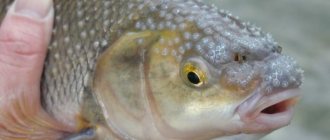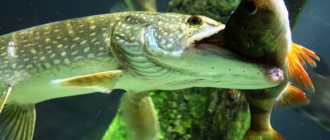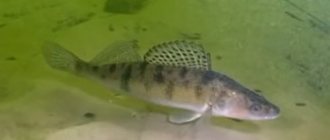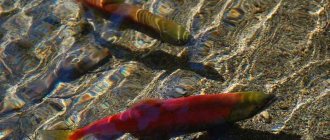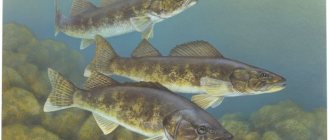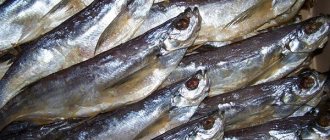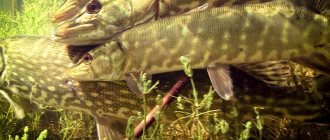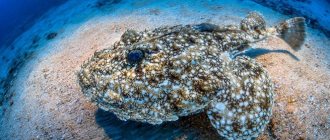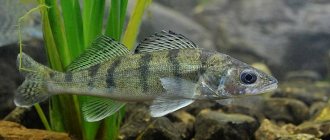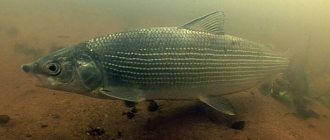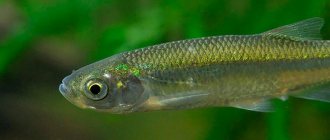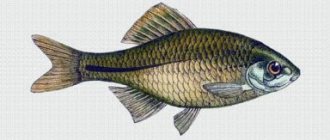Fish, which inhabit almost all types of water bodies, are characterized by the greatest variety of reproduction methods among animals. Over a huge period - more than 400 million years, fish have mastered reservoirs with fresh and salt water; they live at various depths, in high-mountain and underground reservoirs, in rivers and streams with fast currents and in stagnant silted floodplains and swamps. The environment and living conditions require adaptation for the survival of not only adult individuals, but also for maximum preservation of offspring. From this point of view, it is very interesting to get acquainted with the facts of how fish reproduce and what this gave to each species.
Classification of fish according to breeding conditions
Most fish species release reproductive cells into the external environment, and fertilization, as well as their further development, occurs outside the female’s body. The majority of species do not take care of their offspring, and some even eat larvae and fry. But they choose places for spawning, which are often vast distances from their usual habitat.
There are species of fish in which the parental instinct is highly developed. They build special nests for fertilized eggs, take care of and protect the territory. Some fish bear their offspring inside the body or on its surface, in the mouth. Moreover, both females and males take care of the offspring.
According to Kryzhanovsky S.G.
According to the classification of Professor S.G. Kryzhanovsky, adaptive features in fish are noted in the early period of development. The habitat differs not only for different species of fish, but also at different stages of life. Fish breed in certain seasons and choose the most suitable areas of water bodies for spawning. Changes in the environment cause:
- fish fertility;
- type of fertilization and type of development of offspring;
- peculiarity of sexual cycles;
- distribution and migration;
- the possibility of relocating to reservoirs with a different hydrological regime during spawning.
According to the localization of the masonry, S.G. Kryzhanovsky divided all types of spawning fish into:
- pelagophilic - spawning in water;
- lithophilous - laying eggs on stones;
- phytophilous - on plants;
- psammophilous - on sand;
- ostracophilous - into the gills of bivalve mollusks;
- protecting their eggs.
This classification has been used in ichthyology for more than 170 years. 50 years after Kryzhanovsky’s classification, the famous ichthyologist Balon compiled his own classification, more detailed, which indicates not only the location of the laying, but also the types of nests being built, the type of laying eggs on a substrate and without a substrate, and a detailed analysis of viviparous fish species.
According to Balon
The eggs of some fish are able to swim both in the thickness and on the surface of the water, being in a state of lack of oxygen, and in some fish the eggs are able to be in diapause and remain viable without water. The laid eggs can be located above the surface of the water - on coastal stones or plants, and the male periodically pours water over them so that the shell does not dry out.
The types of nests that fish build are also very interesting:
- from foam;
- from a mixed substrate and material;
- glued sockets;
- from plants and their remains;
- from sand;
- on the surface of soil and stones, as well as in crevices and cracks;
- under the protection of sea anemones.
The adaptive features of fish that externally bear their offspring are striking. Depending on the location, the following types of fish are distinguished:
- moving their brood. They carry eggs in body cavities or on any part of it;
- bearing on accessory organs. They glue sticky eggs between the fins, on the skin. The female curls herself into a ring around her eggs;
- bearing eggs in the oral cavity. Growing larvae can feed from the yolk sacs or immediately after hatching they can emerge and feed outside;
- gestating in the brood chamber or in the gill slits.
Viviparous fish also carry fertilized eggs. Internal gestation can be with complete or incomplete transformation. When incomplete, the fish lay zygotes - eggs, at a certain stage of development. When fully metamorphosed, the female gives birth to fully formed fry.
Sexual method of reproduction
As a rule, many fish species are unisexual. However, among such individuals there are species called hermaphrodites. Hermaphrodites are individuals capable of developing both eggs and sperm. Although such individuals cannot self-fertilize their eggs, since their reproductive products (eggs or sperm) do not mature at the same time, but in turn.
For example, the red pagella is capable of changing sex throughout its life: young pagella individuals are usually females; as the fish matures, the ovaries are replaced by testes. This ability, hermaphroditism, is also inherent in herring, salmon, carp, and perch species.
Fertilization of eggs also occurs in different ways:
Most fish species reproduce by external fertilization, in which the eggs are fertilized while in water. As a rule, cartilaginous animals reproduce internally, although this type of population increase is also typical for bony (sea bass, eelpout) and carp-toothed (swordtails, guppies, gambusia) species of individuals.
Depending on the development of eggs, all types of fish are conventionally distinguished into the following categories:
- viviparous;
- ovoviviparous;
- oviparous.
The oviparous development method is the most common and involves the deposition of eggs (eggs) directly into the water. In the ovoviviparous method, fertilized eggs are attached to the posterior section of the female's oviduct and continue to develop there until the fry are born. In a word, at the moment of hatching, the eggs break and fry are born.
The ovoviviparous method of reproduction is applicable to most cartilaginous fish species: katran, white shark, fox shark, sawfish and others. Some species, for example, the stingray, have special outgrowths on the walls of the posterior section of the oviduct, which acts as the uterus, thanks to which they can feed their young with nutritious fluid.
The viviparous method involves the formation of a structure in the female's posterior section of the oviduct that resembles a mammalian placenta. It is necessary so that the mother can feed the embryo with nutrients. Viviparity is characteristic of some species of deep-sea sharks.
The main advantage of the ovoviviparous and viviparous methods is the achievement of the greatest survival rate of the young due to intrauterine development.
According to the nature of reproduction, all fish are divided into the following groups:
Monocyclic species are characterized by only one reproduction during their life. With a single spawning, all eggs of an individual may die. River eel, Pacific salmon, river lamprey, Baikal golomyanka and some other fish are called monocyclic due to their single reproduction rate.
However, most species reproduce several times throughout their existence, so they are polycyclic individuals.
Reproduction
The predominant method of fish reproduction is sexual, in which different-sex individuals of the same species participate in fertilization. Along with sexual ones there are:
- Parthenogenesis – in which the development of the egg occurs without the fusion of male and female gametes. In some species, the development of germ cells goes through only the cleavage stage without the formation of a larva. Only in some cases do metamorphoses occur before the larval stage. In most cases, such offspring die. In salmon, fertilized and unfertilized eggs can coexist in one clutch.
- Gynogenesis is reproduction in which the germ cells of closely related fish species penetrate the eggs, but do not fertilize, but stimulate their development. As a result of gynogenesis, only female eggs emerge from the eggs. In Mexico, there are populations of mollies consisting only of females.
Most fish have male and female individuals (different sexes), but there are also hermaphrodites that combine the sexual characteristics of both sexes. In some species, sex changes occur with age. For example, in the red pagella, the ovaries begin to function as testes with age. In hermaphrodite guppies, ichthyologists have discovered the ability to self-fertilize, but the eggs are released unfertilized.
There are also differences in the method of fertilization. Highlight:
- external – in which fertilization of eggs by sperm occurs in the external environment;
- internal - when the male, using a pseudophallus, introduces the seed into the female’s reproductive system, where fertilization occurs.
In the latter case, the development of eggs occurs inside the female’s body, and fry are born, which immediately begin to feed on their own. Such fish are classified as ovoviviparous. In addition to ovoviviparous fish, there are also viviparous fish. In them, the lower parts of the oviduct form an analogue of the mammalian placenta. These include some species of sharks. In them, the nutrition of the larvae and fry is provided by the female’s body, and not by the yolk sac of the egg.
Depending on the nature of reproduction, all fish are classified into:
- monocyclic - representatives who spawn only once in their life, after which they die;
- polycyclic - spawning or giving birth to offspring throughout the entire period of life. These include most types of fish.
The rate of sexual maturation and productivity are of great importance in the life and reproduction of fish.
From eggs to fry
The fertilization process itself occurs in water. The female lays eggs, insemination occurs by penetration of the male reproductive cell into the opening of the egg - the micropyle.
As the eggs develop, they may be exposed to various external threats, so the survival rate is quite low.
This method (sexual) of fish reproduction is common to many, but there are two more types of reproduction.
Parthenogenesis - in this case, fertilization by the male is excluded. The point is that after laying, at the time of crushing, unfertilized eggs are located next to the fertilized ones. Their development proceeds similarly.
Gynogenesis - the participation of a male is also not required. Only females are born. The sperm that fertilize the eggs are the seeds of other fish species nearby.
We recommend reading
Symptoms and treatment of hexamitosis in fish
Timing of puberty
In fish, puberty occurs at different periods of life. The shorter a fish lives, the earlier it begins to reproduce. The variability of puberty ranges from 1-2 months to 15-30 years. Males mature earlier than females. The ability to procreate depends on the size of the individual. The better the fish eats, the faster it grows, the earlier it is able to spawn.
The metabolism of fish, and therefore life expectancy, is affected by water temperature. The higher it is, the faster the fish ages and the earlier it begins to spawn. Sexual dimorphism - visual differences between representatives of different sexes - plays a great role in creating a pair and successful fertilization. In some species it is difficult to distinguish females from males. In others, males have:
- larger size;
- more variegated, contrasting color;
- external genitalia - gonopodium or pterygopodia.
Sex differences may be present throughout life or appear only during the spawning period. This “nuptial outfit”, which occurs under the influence of activation of sex hormones, is typical for carp, whitefish, stickleback, salmon, and pink salmon.
Sex ratio and spawning characteristics
As a rule, in a population the ratio of females to males is 1:1. But under the influence of changing conditions it can shift in one direction or another. For example, infection of guuppies with the saprolegnia fungus leads to the death of the fish. In this case, the surviving females turn into males. High environmental temperatures lead to a predominance of males in the green swordtail population. Stimulating the mark with steroids can also shift the sex ratio.
Among the fish there are:
- monogamous species - in which fertilization of the female’s eggs occurs only by one male;
- polygamous species - when there are 3-4 individuals of the opposite sex per individual.
The mark period is influenced by external and internal factors. Most often this is the temperature of the water in the reservoir. Each type of fish has its own comfortable temperature regime, so spawning can occur in spring, summer or autumn. Caviar can ripen either simultaneously or in portions.
The time of spawning also varies - from a few seconds (stickleback) to several months (cod, plume). The same species in different conditions can spawn eggs simultaneously or in portions. This adaptive mechanism helps to make maximum use of the food supply, increase the survival rate of young animals and the fertility of females.
Natural selection ensured the best survival and prevalence of populations, depending on living conditions. Various methods of reproduction provide maximum adaptation to these changes. They allow the largest number of juveniles to survive, expand their range and compete with other species of inhabitants of the Earth’s water basins.
